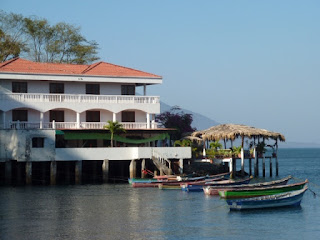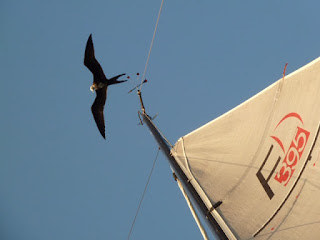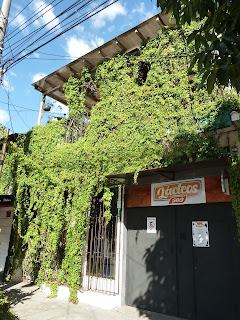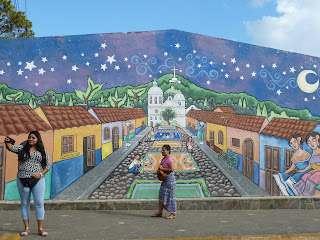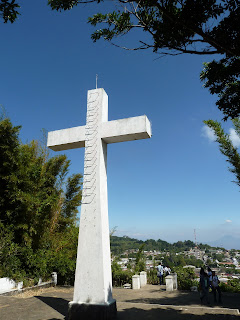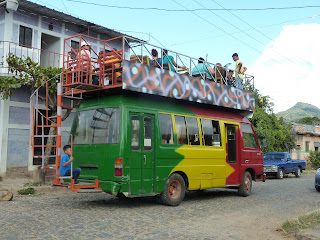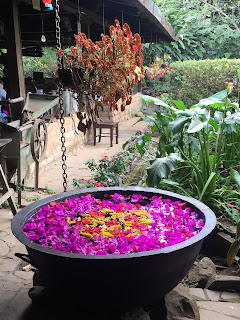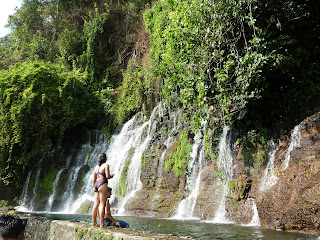There are many wonderful examples in
English of other languages contributing words that communicate something really
pithy for which no English word exists.
For example, the German word Schadenfreude – such an excellent word,
even if admitting to ever feeling it is probably not PC. The Spanish have another excellent word, “Papagayo”
which means a person who is the embodied amalgam of every awful, nasty person you
have met over the course of life.
In case you bought that, sometimes a lie in support of a good story is worth the cost of the lie. A papagayo is actually a
parrot. Nicaraguan sailors use it as a nickname to describe the seasonal
north-easterly winds that blow across the peninsula from the Caribbean Sea. If
you sail in winter months from El Salvador to Costa Rica you will meet El
Papagayo. He is dangerous and therefore you will treat him warily because he is
someone who sometimes blows lightly, and other times blows with storm force; he
is shifty, extremely unpredictable and is definitely not to be trusted.
Hmm, writing those words a certain world
leader comes to mind. But returning to
the story of our recent travel adventures, we left Bahia del Sol with 250 miles
of sailing towards southern Nicaragua. Our
fingers were crossed in the hope of skip jacking the Nicaraguan coast with El
Papagayo sleeping and not paying attention to us.
Because both of us have developed post-retirement
soporific personalities, wherever possible we try to avoid the sleep
deprivation that comes with night sailing. If winds are from the shore and there is a
beach, all that is required is to drive in to a safe anchoring depth, drop the hook and
bunk down until morning. The
disadvantage is that such roadstead anchorages tend to be lumpy, bumpy and
unpleasant - almost always making you wonder if you would have been better off staying out at
sea.
With our eye on the weather forecast we made our first roadstead beach stop at San Sebastion and it turned out to be ok. The
next night we spent in protected anchorage at Isla Meanguera. We were greeted there by dos hermanos niños,
who hand paddled to our boat in fishing net buckets boats using their flip
flops. We invited them aboard for soft-drinks,
candies and found a spare bata-ball set we had on board to give them. Afterwards one of the boys gave us a walking
tour of the village.
The next morning we decided to head over to the
Honduras island of Isla el Tigre. Our
day visit there required a stop at the port office for yet another set of immigration
and exit zarpe papers. Remarkably, the
service was free. The following morning,
we left at 05:30 with a tailwind and started the leg to Puesta del Sol with 3
hours of 10 knot sailing and arrived 2 hrs ahead of plan.
Puesta del Sol, Nicaragua, is a lovely
luxury resort incongruously set in a remote estuary. Built in 2002, political
upheavals shortly thereafter caused a sharp decline in Nicaraguan tourism. The
resort remains an excellent stop for cruisers and maintains a dignified air of elegance, despite being virtually empty. Its infinity pool would have been an early
design original. Unfortunately, due to
our southward rush in hopes of beating a papagayo window, we couldn’t stay long.
The 120-mile leg that followed was where Señor Papagayo finally showed himself. He made his
introduction promptly upon our leaving the dock at 6 am. If your life experience has never included pounding to weather in steep, lumpy, tide-driven seas on an empty stomach, good for you. A cup of coffee did help to settle our guts,
sort of. But not puking is only marginally better than puking, and the day had
just started. By noon we had 15-20 knots
on the nose, gusting to 25 and an adverse tide. Tossing a coin for what to do at the end of our tiresome day, we
headed for shore and dropped our hook at the beach under the lights of seaside
resort buildings at Masachapa. The wind settled down a little at night, giving us false hopes for the following day.
Awake at 6 am we headed out with optimism in our hearts and only 50 miles
to go. Thirty
minutes later we went to a second reef in the main and realized that El
Papagayo is a real ass-hole. Up, down,
10 knots, 30+ knots, close-hauled, reaching, main out, main in, traveler up,
traveler down, holy shit this guy is annoying. Anduril is a light-weight boat
and the gin and tonic cruiser types down here consider her to be a bit too saucy for use as
a cruising platform. She can go fast but
she can be a twitchy sort of dog and El Papagayo is one hell of a dog button pusher.
Food breaks proved difficult. Bathroom breaks: it was easier to hold it. Salt
spray: we so love you in our eyes and the crusty feeling you leave when the sun dries you on our skin . We also love having you
in our bunk cushions when the forehatch leaks. Goddamn it, for the seventh time we need to furl the headsail and the jib sheets are once again tangled with the dinghy …
Eventually bad people take their leave, or
you take theirs. After 8 hours of constant tending to the great one's whims we reached San Juan del Sur.
At the entrance is a huge statue of Jesus high on the cliff above. In our own way we gave our thanks to him on the hill, anchored, mixed stiff vodka tonics (gin
is hard to find here) and promptly fell asleep.
Here we wait a while. El Papagayo continues with his windy mischief and we are ignoring him for now. He has the potential for one
last kick in our ass when we leave here in a few days. But at least the punch will be on our ass and not on
our nose.
San Juan del Sur is mecca
surferville and there are various tourist pleasures to be had here. We will rent a car and go to Granada, which
we hear is beautiful.
This cutie fisherman zoomed up to us and wanted to take cell phone photos of our velero. He did a selfie with Anduril in the background.
Yeah! Finally, a spanish mackerel!
Tonight's dinner.
We spent a day along the coastline of El Salvador with binocs in hand, looking out for these &*#@& flags. They marked the end of a long line fishing net. We'd spot them and then try to match them with the fishing panga holding the other end. Then skirt around.
Dos hermanos niños, who hand paddled to our boat in fishing net buckets boats using their flip flops as propellers. They hopped aboard and we tried our best to have a conversation using Google Translator.
Our anchorage at Isla Meanguera.
School is out at Isla Meanguera.
Isla Meanguera.
This nasty frigate bird was pecking at our expensive wind instruments.
Complimentary welcome drinks at Puesta del Sol, Nicaragua.
Great pool at Puesta del Sol Marina. I wish we could have stayed longer but the weather forecast was ominous.
Here we are with the beautiful surfer backpacker types at San Juan del Sur after defeating the dreaded Señor de Papagayo.
Greg & Alice







